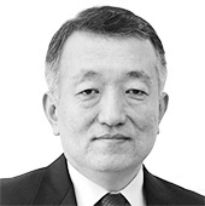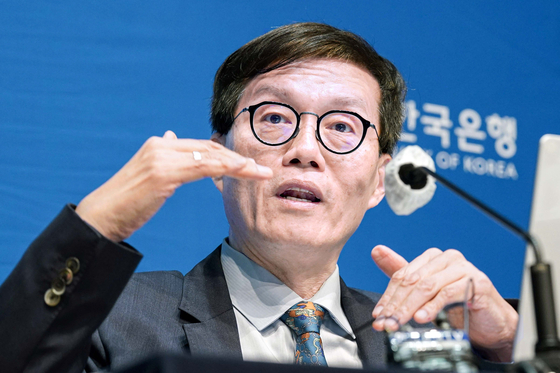How to bury your head in the sand

Koh Hyun-kohn
The author is the executive editor of the JoongAng Ilbo.
“The Korean won-U.S. dollar exchange rate will fall, and stock prices will bounce back. Inflation will normalize around the 2 percent range. The economic environment will be better in the second half than in the first half. Korea’s economic fundamentals are different from the past. The doomsayers are muted these days,” a senior government official cheerfully said last spring. He probably hoped for an upbeat mood running until the next parliamentary election in April.
But the numbers point in the opposite direction. The Korean economy hardly grew — up 0.6 percent against the previous quarter — in the July to September period. The consumer price index shot up to 3.8 percent against a year-ago period in October on the spike in fuel prices from the Middle East conflict. Everything has become too expensive. The financial markets are wobbly — and susceptible to even a minor upset. Confidence in the second-half economy has shrunk as prices remain unstable amid an economic slowdown, raising alarms about stagflation.
Such overconfidence and premature optimism brought about serious missteps. The government doled out 40 trillion won ($31 billion) to finance cheap mortgage loans to prevent a free fall in housing prices this year. The market took the move as a signal that housing prices have hit the bottom. Young people rushed to borrow money from banks as if it were their last chance to own a home. Even the rich took out the loans as the policy loan didn’t set any cap on income levels. A speculative real estate frenzy triggered by the government panned out even amid an economic downturn and high interest rates.
The lifting of loan regulations provided a boon for commercial banks whose income mostly relies on the interest rate gap. Banks even turned out 50-year mortgage loans. Household loans have swelled by 2 to 7 trillion won every month since April to reach 1,877 trillion won. In the meantime, loans to companies rose to 1,238 trillion won by the end of September, and government debt topped 1,100 trillion won. The country has built up a debt pile of more than 4,000 trillion won, twice bigger than the GDP.
But the government seems to refuse to admit its folly. When the Bank of Korea (BOK) raised concern about the softened loan regulations, Kim Joo-hyun, chairman of the mighty Financial Services Commission, snapped that the central bank did not care enough about the hardship of the working class. He either dismissed people’s deepening pains from excess debt burdens or wanted to avoid accountability. Kim Dae-ki, chief of staff to President Yoon Suk Yeol, warned that heavy borrowing and leveraged investment that was rampant in the past government can be dangerous. It doesn’t make sense to blame the past government when the current one has encouraged leveraged home purchases.
The BOK’s lengthy pause on the rate hike also sent the wrong message that it is done with tightening. The central bank held the base rate steady at 3.5 percent since the last hike in January, even when the U.S. Federal Reserve pushed up its benchmark rate from 4.5 percent to 5.5 percent during the same period. The two percentage point gap between the Korean rate and the U.S. rate cannot be normal. Even a one percentage point gap can stimulate capital flight to raise the won-dollar exchange rate to fuel inflation.
A sense of urgency has vanished. An economic bureaucrat said, “A two-percentage point gap in the U.S. and Korean rates won’t matter much because the Korean economy has become bigger.” BOK Governor Rhee Chang-yong also emphasized that there was no need to fret too much over the rate gap. The U.S. rate went higher than the Korean won on three occasions since the 1997 Asian financial crisis due to slow movement by Korean authorities. Korea suffered each time. The excess liquidity under the Kim Dae-jung presidency, when the rate difference was at 1.5 percentage points from 1999 to 2001, led to the dot.com bubble bursting and the so-called credit card crisis. Real estate prices skyrocketed when the rate gap was widened to 1 percentage point under the Roh Moo-hyun presidency from 2005 to 2007 — and when the gap was stretched to 0.75 percentage points under Moon Jae-in presidency from 2018 to 2020. The liberal party lost governing power after the terms of Roh and Moon.
Governor Rhee must act more determinedly. Former central bank chiefs were mostly all words and no action. Rhee’s comments also began to lose weight. Last month, he warned that the base rate could go higher if the growing household debt does not subside. But the market did not pay heed, as it believed the central bank won’t likely lift the rate.

Stabilizing prices is the central bank’s top priority. Authorities must send a clear message that housing prices must fall further. The Fed has its clear goal of taming inflation. The surge in our housing prices and household debts could have been prevented if the government and BOK had managed fiscal and monetary policy appropriately. Monetary tightening can cause immediate pain. But a loose policy can prompt a bigger hardship down the road. As Kim, the presidential chief of staff, had said, the debt frenzy could cause a disaster many times bigger than the bailout crisis of 1997-1998.










with the Korea JoongAng Daily
To write comments, please log in to one of the accounts.
Standards Board Policy (0/250자)